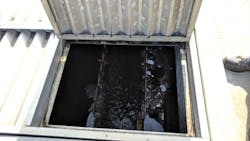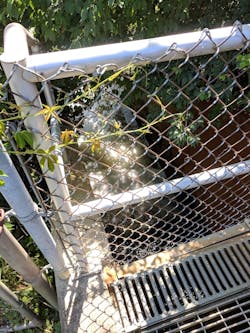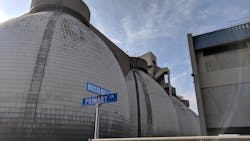About the author:
Cristina Tuser is an Associate Editor for Water & Wastes Digest magazine. Tuser can be reached at [email protected] or 847.391.1007.
What is wastewater?
Wastewater is used water that has been affected by domestic, industrial and commercial use. The composition of all wastewaters is thus constantly changing and highly variable, which is why it is so difficult to pinpoint a singular definition of the word itself.
The composition of wastewater is 99.9% water and the remaining 0.1% is what is removed. This 0.1% contains organic matter, microorganisms and inorganic compounds. Wastewater effluents are released to a variety of environments, such as lakes, ponds, streams, rivers, estuaries and oceans. Wastewater also includes storm runoff, as harmful substances wash off roads, parking lots and rooftops.
Types of wastewater
Often used interchangeably with the term sewage, "sewage" technically denotes any wastewaters which pass through a sewer. Prior to entering a wastewater treatment plant, wastewater is sometimes called raw wastewater or raw sewage.
Domestic wastewater originates from activities such as restroom usage, bathing, food preparation and laundry. Commercial wastewater from non-domestic sources, such as beauty salons or auto body repair shops, for example. This wastewater may contain hazardous materials and requires special treatment or disposal. Industrial wastewater originates from industrial or commercial manufacturing processes, such as agriculture, and are usually more difficult to treat than domestic wastes. Industrial wastewater’s composition varies on an industry-by-industry basis.
Organic content of wastewater
The organic content of wastewater is made up of human feces, protein, fat, vegetable and sugar material from food preparation, as well as soaps. Some of this organic content is dissolved into the water and some exist as separate particles. The portion of organic material that does not dissolve but remains suspended in the water is known as suspended solids. Wastewater is treated to remove as much organic material as possible.
RELATED: What is Advanced Wastewater Treatment
Implications for microorganisms
Naturally occurring soil and water bacteria eat the organic waste in wastewater and use it as a food and energy source to grow rapidly. In a natural water environment where there is plenty of oxygen dissolved in the water, aerobic bacteria eat the organic material and form a slime of new bacterial cells and dissolved salt-waste products.
If undiluted wastewater is left on its own, anaerobic bacteria decompose the waste organic material and release odorous gases such as hydrogen sulphide. Odor-free gases such as methane and carbon dioxide can also be released.
Where there is an overwhelming amount of wastewater, all the oxygen will be used up and the anaerobic bacteria will take over, making the water go septic. This is ultimately harmful to fish and other forms of life dependent on oxygen, on occasion creating dead zones.
Inorganic matter
Inorganic minerals, metals and compounds, such as sodium, copper, lead and zinc are common in wastewater from both sewage and wastewater. They can originate from industrial and commercial sources, stormwater, and inflow and infiltration from cracked pipes. Most inorganic substances are stable and cannot be broken down easily by organisms in wastewater.
Nutrients
Excessive nutrients such as phosphorus and nitrogen can cause eutrophication, which can also be toxic to aquatic organisms. This also promotes excessive plant growth and reduces oxygen availability, altering habitats and potentially endangering certain species.
RELATED: Wastewater Treatment in Municipal & Industrial Applications
Other wastewater pollutants
Bacteria, viruses and disease-causing pathogens in wastewater can pollute beaches and contaminate shellfish populations. Fecal coliform bacteria in human waste is typically harmless, but there are pathogens that can negatively impact human health. These can be bacteria such as typhoid or viruses such as hepatitis B, for example. Direct contact with these pathogens or pollution of the water supply can cause infections as a result.


